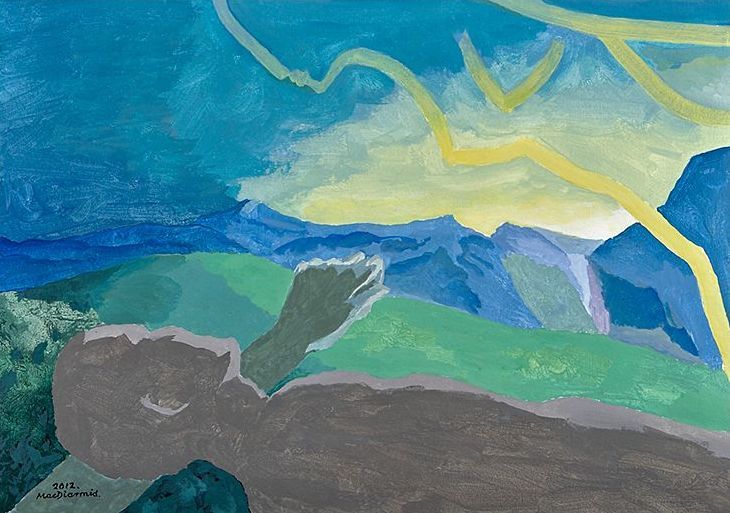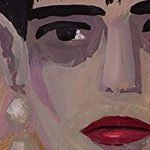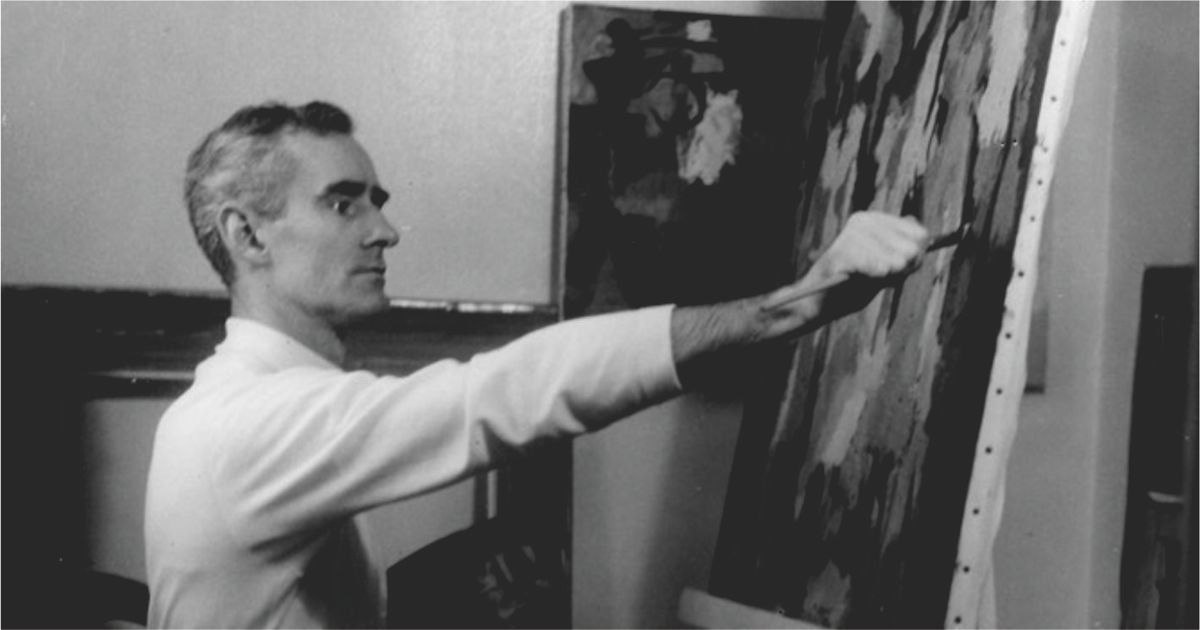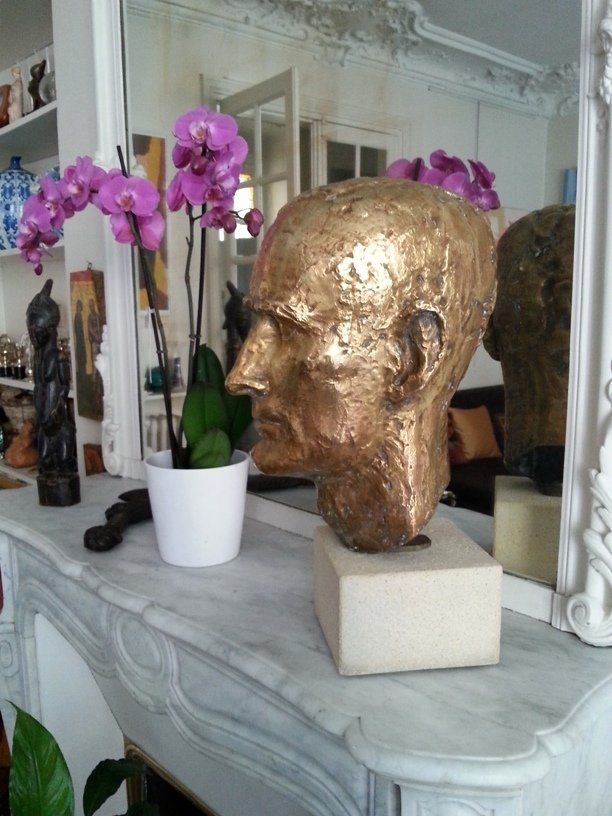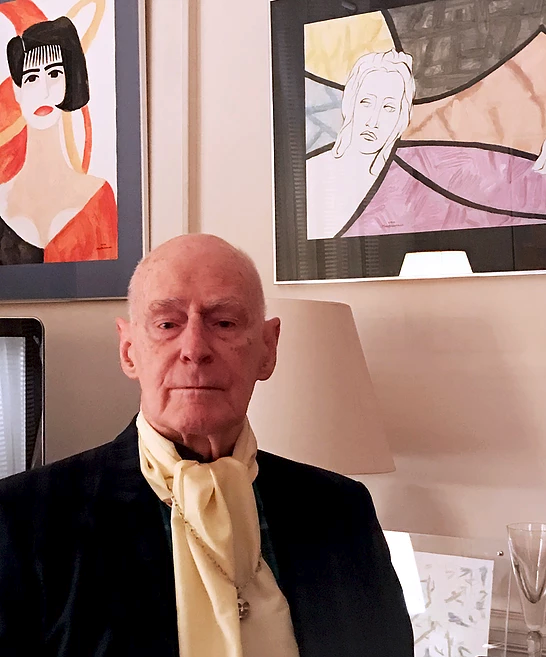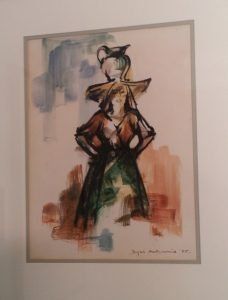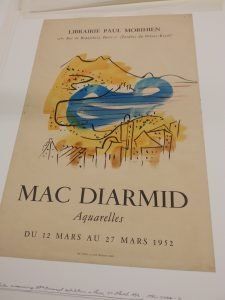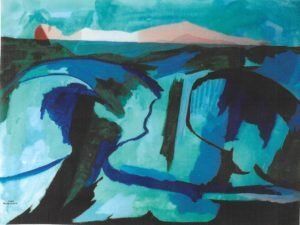Diversity – Douglas MacDiarmid landscapes over eight decades
Diversity - Douglas MacDiarmid landscapes over eight decades
Douglas MacDiarmid has painted landscapes since he was a young boy, as fascinated by natural surroundings as he is by the human form. Various places were recorded in passing during his extensive travels, but others have been revisited many times throughout his painting career, as favourite friends.
Like his other work, there is no singular landscape style but a myriad of approaches depending on the scene and the mood it evokes…sometimes literal, or semi abstract and others becoming more abstract with each iteration, stripping back detail as he burrows down to find the elusive essence of the vision in mind. Some are strongly lyrical, while others appear as geographical portraits. Some speak of the classical world as well as country, and he has a penchant for including figures in his landscapes. This dates back to his bemusement that the painted New Zealand landscapes of his youth always seemed to be empty of people. As if the land was unoccupied.
Even in periods when landscapes have been deeply unfashionable, Douglas has chosen to continue to paint the land as it strikes him in his travels – or it has chosen him. However, while almost all MacDiarmid exhibitions have included their share of landscape paintings, only a handful have been devoted solely to the subject.
Here is a selection of lesser known, yet very different landscapes, representing each decade of MacDiarmid’s career, to show the diversity and innovation of his practice as well as his enduring interest in looking beneath the surface.
_____________________________________
1940s Canterbury Plains from the Bellbird 1945
Douglas recently saw a photograph of this painting in colour for the first time in more than 60 years. It is still a view he loves. He painted it from an historic hiker’s hut called ‘The Sign of the Bellbird’ on the summit of the Port Hills (the ‘Bellbird’ of the title, which was apparently located on ‘Bell Block’, just to be really confusing).
MacDiarmid walked all over the Port Hills in his Christchurch student and military days, both to discover the Banks Peninsula landscape in its many aspects and on regular hikes over to Governors Bay to stay with musician Fred Page and his painter wife Evelyn. The local landmark survived the devastating Christchurch earthquakes, then burned down in suspicious circumstances in September 2015.
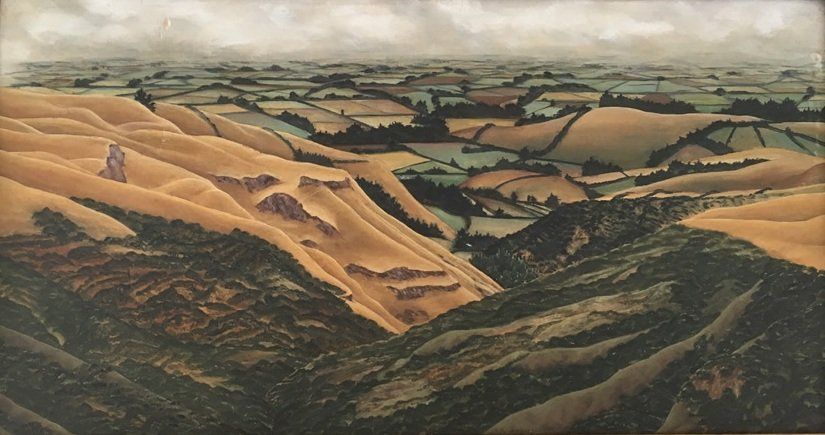
1950s Landscape of the Basque Coast 1956
This dramatic French Basque landscape looks over the Bay of Arcachon, on the Atlantic Coast near Bordeaux, with the tallest sand dune in Europe, the Dune of Pyla, clearly visible in the top left-hand corner of the painting.
When most people think of the Basque Country, they think of Spain but three of its 10 provinces are in south-western France and have a distinct cultural and geographical character.
In the 1950s, the Arcachon area was a special retreat for Douglas, the place where he spent many holidays at his wealthy partner Jacqueline’s palatial summer house at Le Pyla-sur-Mer, overlooking the sea, until she died after a tragic accident early in 1961.
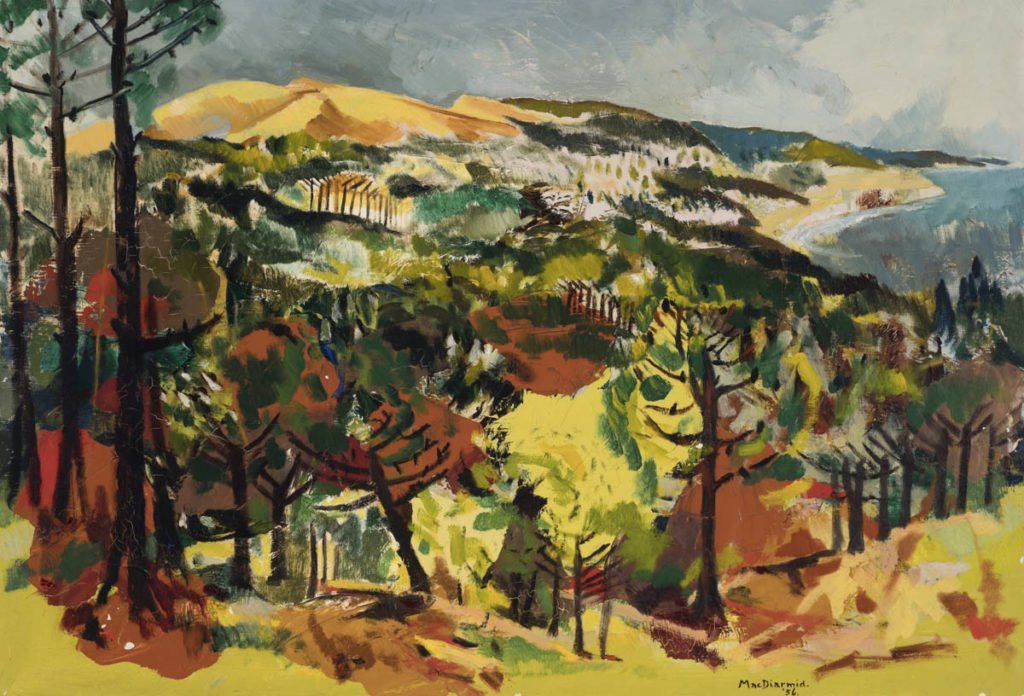
1960s Alpes-Maritimes 1961
A famous region in the extreme south east corner of France on the border with Italy and the Mediterranean coast. Alpes-Maritimes takes in the French Riviera, the cities of Nice, Cannes, Antibes and Grasse as well as numerous alpine ski resorts, and entirely surrounds the tiny principality of Monaco.
This vibrant painting was the first MacDiarmid work purchased for the New Zealand Government by the London High Commissioner late
in 1958, for the Washington consular office – another landscape was bought soon after for the London office. Douglas always considered it one of his best of this period.
For many years it hung over the fireplace in the ‘small sitting-room’, as it was called, of the New Zealand Embassy residence in Washington USA. Douglas’ old university friend the late Jim Weir came to know and admire it then, when he was No 2 diplomat in the embassy. In the 1980s, the Ministry of Foreign Affairs sold some of its older paintings, to diversify the collection and make way for newer, younger artists. Jim and his wife Mollie bought the painting at auction in Wellington about 1989 – “The only time I’ve ever bought anything at auction – which certainly makes the adrenalin run,” Jim later recalled. But we never had any doubt that it was the right decision to buy it! Our best painting of his -it’s a breathtaking exploration of colour.” The painting remains in the family as a treasured heirloom.
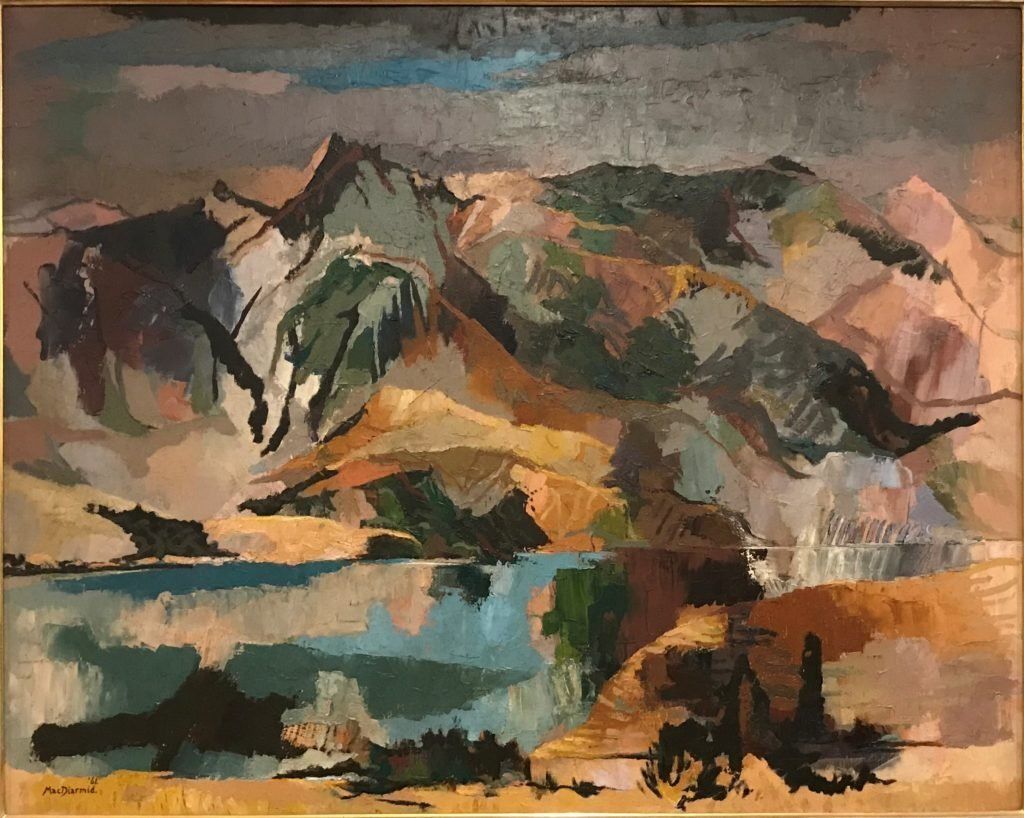
1970s Ceylon III A 1973
What could be less European than the tropical rice paddy fields of what is now Sri Lanka, where Douglas toured in 1973. He was intrigued by the interplay of light and shadow with water, the distinctive angles and planes, as well as by the intensity of colours, the effect of heat on the environment.
From his travel notes and sketches he made a number of pastel paintings, and later oil or acrylic versions, of the traditionally cultivated landscape. His love of landscapes, of documenting his travels in paint, has made him a historical chronicler as well as an interpreter – recording views and ways of life across the world that in many cases have since been lost to ‘progress’.
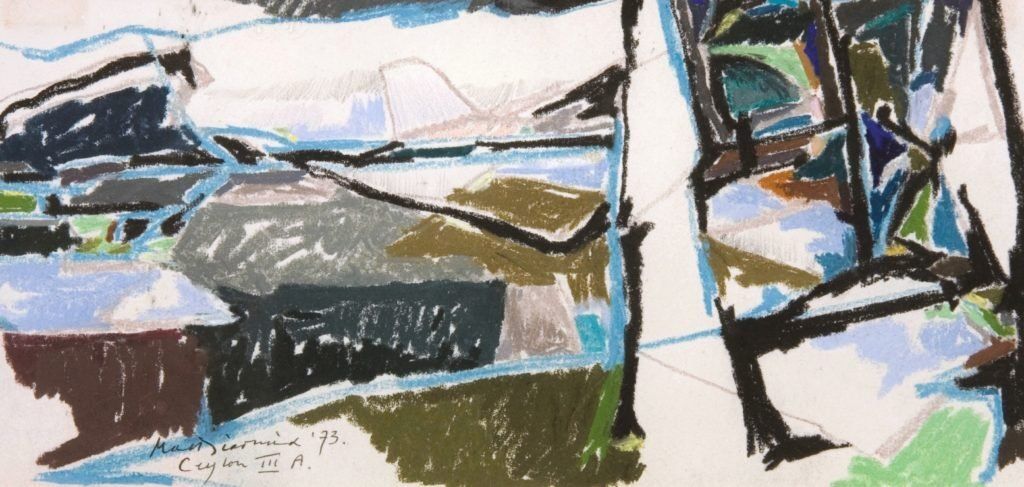
1980s Crete II 1985
This is Kakamouri headland at Plakias, a beautiful but isolated seaside village on the south coast of Crete that is reached through spectacular mountainous gorges. Crete is a place very close to Douglas’ heart, the largest island of Greece – birthplace of Zeus, King of the Gods – and the centre of Europe’s first advanced civilisation, the Minoans, dating back to 2700 BC.
The mid 1980s was Douglas’ Greek period, when he dedicated several years to capturing the splendour of an ancient land, never losing
sight of the influence of those rugged coastlines, isolated beaches and hidden clefts and the wild, rocky hinterland on classical mythology. Here the landscape was as much a deity as those mercurial gods and goddesses manipulating nature and man at the beginning of time.
He travelled widely through Greece, seeking out the unfamiliar, the paths less travelled as well as places celebrated for their wonderful archaeological ruins. This reverie culminated in a significant solo exhibition ‘Translations of the Greek Landscape’ at Galerie Lambert on Île Saint-Louis, the island in the River Seine behind Notre Dame Cathedral, late in 1986. The exhibition lasted a month and was widely admired. It looked brilliant on the walls but almost nothing sold. The French economy was sluggish; landscapes were apparently not in vogue. Douglas shrugged off his disappointment, he was always more interested in making paintings than selling them. Besides, they were certain to sell from the studio over time, including three to an embassy in Athens soon after the show.
He described this scene in his painting record as ‘headland in green blue sea, two sea caves’. With its jewel-like colours, it was a standout choice as cover image on invitation cards to the exhibition.
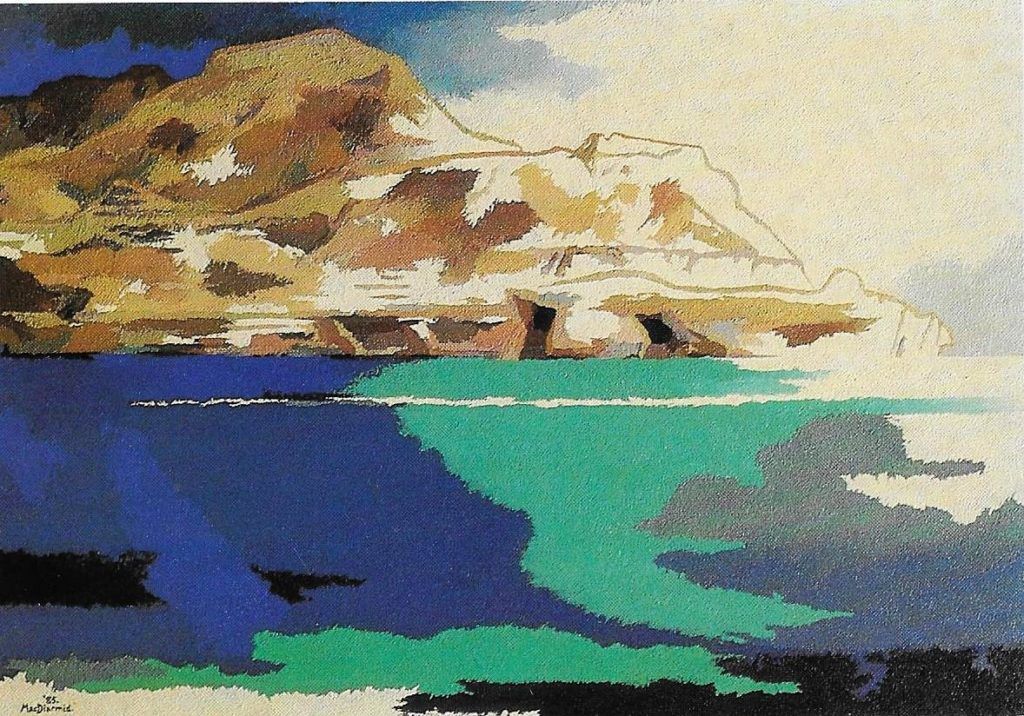
1990s Three strong geographical influences
Turkey is another of MacDiarmid’s favourite countries, one he has meandered through at his leisure and gone back for more to experience not only the diverse landscape and culture, but its connection to early European civilisation. He and his life partner Patrick made at least eight trips to various parts of the country between 1985 and 2001.
Akyaka is an Aegean coastal town in south west Turkey. It is now a charming resort town with an Ottoman heritage but one that still guards its slow way of life – which is probably what attracted Douglas to the spot in the first place.
By the 1990s, many MacDiarmid landscapes had become abstract or semi abstract visions, unencumbered by detail as he dug for the rhythmic essence beneath the visual veneer. Sometimes saying less is more evocative by far.
In his painting journal, he identifies this painting as ‘outline/foreground very pink, black-lemon pines, pale mountain’. It was based on notes and drawings done during a holiday at Akyaka from 5-19 October 1996. He also described his impressions in a letter to a friend: “I doubt that you’ll know the village I chose – it must be the last peaceful village in the world, so of course figures on no map I’ve seen. Akyaka – stunningly situated right at the head of the Gulf of Gökova. It was much later-in the season than I’d have wished, meaning no swimming — no way I could have guessed that there’d be all those fresh water springs seeping down from those paradises of pine forest and rock all round & making the sea so cold that the danger exceeded anything a brass monkey ever dreamed of. Truly wonderful, endless, walks became the order of most days…”
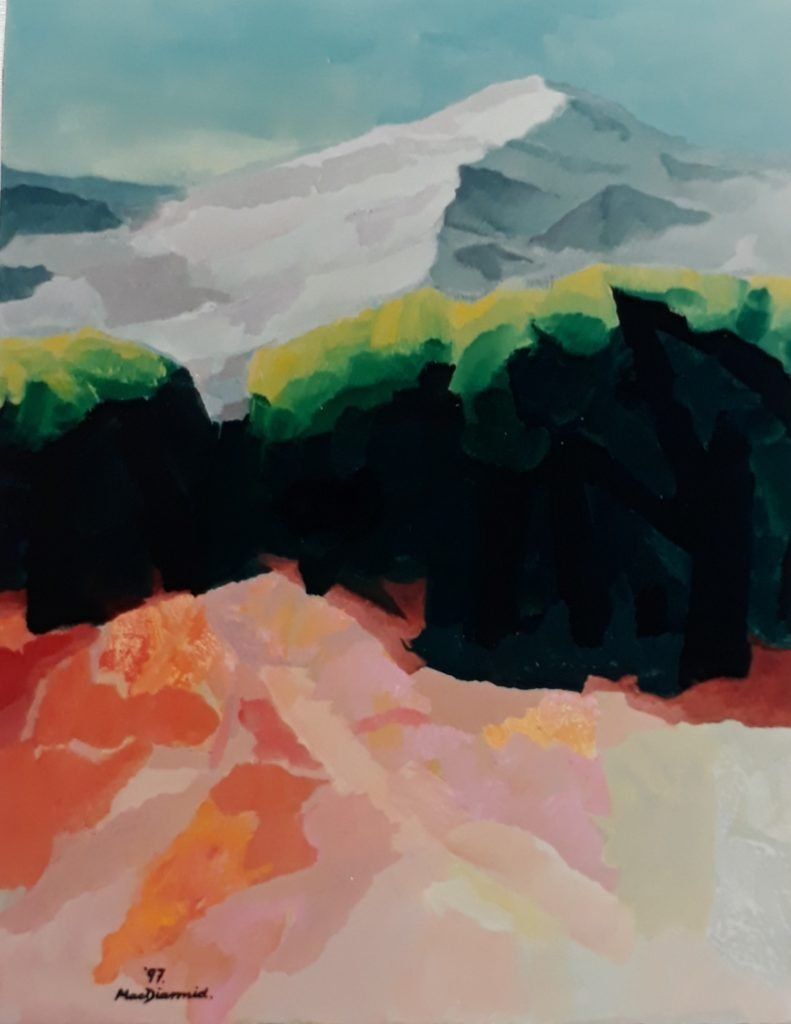
To read more about Douglas MacDiarmid’s fascinating journey through life Buy your copy of Colours of a Life – the life and times of Douglas MacDiarmid by Anna Cahill (2018)

